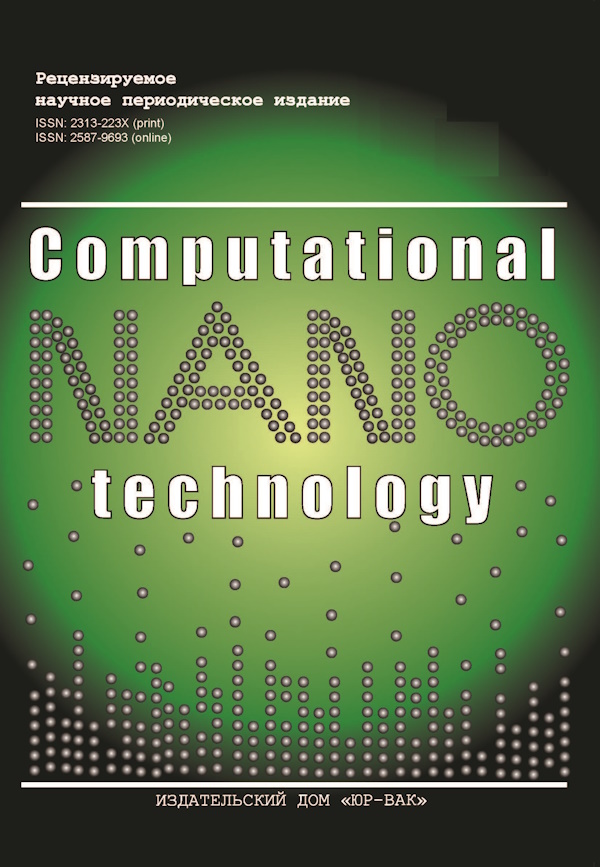Development of Micro-conductors with Magnetically Soft Glass Coating for Technological Applications
- Авторлар: Ibragimov K.F.1, Gerasimova A.A.1, Sheshenin E.V.1, Chut M.1
-
Мекемелер:
- National University of Science and Technology «MISiS»
- Шығарылым: Том 10, № 1 (2023)
- Беттер: 30-35
- Бөлім: AUTOMATION OF MANUFACTURING AND TECHNOLOGICAL PROCESSES
- URL: https://journals.eco-vector.com/2313-223X/article/view/545836
- DOI: https://doi.org/10.33693/2313-223X-2023-10-1-30-35
- ID: 545836
Дәйексөз келтіру
Аннотация
The work is devoted to advanced research of glass-coated microconductors as a special class of amorphous metal alloys. These magnetic microwires are model systems for fundamental research of a number of physical phenomena that are difficult to access in other conventional magnetic materials. The increased magnetic softness combined with their small size made them very promising for many modern technological applications. The authors attempted to demonstrate the development of microconducts with a magnetically soft glass coating from three closed points of view: control of internal stresses by changing the ratio between the diameter of the metal core and the thickness of the glass; achievement of a nanocrystalline state using two-phase nanoscale crystallites embedded in an amorphous matrix; control of heat treatment conditions before any participation of crystalline phases, i.e. weakening of internal stresses, frozen after the manufacturing process.
Негізгі сөздер
Толық мәтін
Авторлар туралы
Khusrav Ibragimov
National University of Science and Technology «MISiS»
Email: Khusrav.ibragimov@mail.ru
graduate student at the National University of Science and Technology “MISiS”
Ресей, MoscowAlla Gerasimova
National University of Science and Technology «MISiS»
Email: allochka@rambler.ru
ORCID iD: 0000-0002-1317-9025
Scopus Author ID: 54404655200
ResearcherId: AAD-7091-2021
Candidate of Engineering, Associated Professor; National University of Science and Technology “MISiS”
Ресей, MoscowEgor Sheshenin
National University of Science and Technology «MISiS»
Email: sheshenin1999@mail.ru
student at the National University of Science and Technology “MISiS”
Ресей, MoscowMaxim Chut
National University of Science and Technology «MISiS»
Хат алмасуға жауапты Автор.
Email: mars.chut11@gmail.com
student at the National University of Science and Technology “MISiS”
Ресей, MoscowӘдебиет тізімі
- Ipatov M., Zhukova V., Gonzalez J., Zhukov A. Manipulating the magnetoimpedance by DC bias current in amorphous microwire. Journal of Magnetism and Magnetic Materials. 2012. No. 324 (23). Pp. 4078–4083. DOI: https://doi.org/10.1016/j.jmmm.2012.07.024.
- Seok Byon K., Yu S., Kim C.G., Vazquez M. Bias-current effect on giant magnetoimpedance in co-based amorphous microwire. Journal of Non-Crystalline Solids. 2001. No. 287 (1-3). Pp. 339–343. DOI: https://doi.org/10.1016/s0022-3093(01)00579-8.
- Soft magnetic materials – technologies, materials, devices, new developments, industry structure and global markets. Report summary. London, 2015, August.
- Jiles D. Recent advances and future directions in magnetic materials. Acta Materialia. 2003. No. 51 (19). Pp. 5907–5939. DOI: https://doi.org/10.1016/j.actamat.2003.08.011.
- Soft magnetic application guide. The Magnetic Products Group of SPS Technologies 1-36. The Arnold Engineering Co., 2003.
- Jagadeesh P., Puttegowda M., Rangappa S.M. et al. A comprehensive review on 3D printing advancements in polymer composites: Technologies, materials, and applications. The International Journal of Advanced Manufacturing Technology. 2022. No. 121 (1-2). Pp. 127–169. DOI: https://doi.org/10.1007/s00170-022-09406-7.
- Shakhov S.I., Kabakov Z.K., Gorbatyuk S.M. et al. Impro-vements to electromagnetic stirring systems for billet and bloom continuous casting machines. Part 1. Metallurgist. 2022. No. 66 (5-6). Pp. 510–517. doi: 10.1007/s11015-022-01354-7.
- Onufer J., Ziman J., Kladivova M. Unidirectional effect in domain wall propagation observed in bistable glass-coated microwire. Journal of Magnetism and Magnetic Materials. 2015. No. 396. Pp. 313–317. DOI: https://doi.org/10.1016/j.jmmm.2015.08.055.
- Landau L.D., Lifshitz E.M. Electrodynamics of continuous media. New York: Pergamon Press, 1975.
- Pirota K.R., Kraus L., Knobel M. et al. Angular dependence of giant magnetoimpedance in an amorphous Co-Fe-Si-B ribbon. Physical Review B. 1999. No. 60 (9). Pp. 6685–6691. DOI: https://doi.org/10.1103/PhysRevB.60.6685.
- Gerasimova A.A. Regularities of deformation of materials and improvement of their quality under various processing modes. Symbol of Science. 2019. No. 9. Pp. 17–20.
- Panina L., Dzhumazoda A., Nematov M. et al. Soft magnetic amorphous microwires for stress and temperature sensory applications. Sensors. 2019. No. 19 (23). P. 5089. DOI: https://doi.org/10.3390/s19235089.
- Vazquez M., Chiriac H., Zhukov A. et al. On the state-of-the-art in magnetic microwires and expected trends for scientific and Technological Studies. Physica Status Solidi (a). 2011. No. 208 (3). Pp. 493–501. DOI: https://doi.org/10.1002/pssa.201026488.
- Herrero-Gomez C., Aragon A.M., Hernando-Rydings M. et al. Stress and field contactless sensor based on the scattering of electromagnetic waves by a single ferromagnetic microwire. Applied Physics Letters. 2014. No. 105 (9). P. 092405. DOI: https://doi.org/10.1063/1.4894732.
- Zhukova V., Talaat A., Ipatov M. et al. (). Optimization of soft magnetic properties in nanocrystalline Fe-rich glass-coated microwires. JOM. 2015. No. 67 (9). Pp. 2108–2116. DOI: https://doi.org/10.1007/s11837-015-1546-x.
Қосымша файлдар











